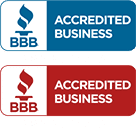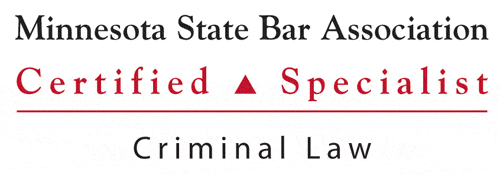
If you have been arrested, you know that the charges aren’t always cut and dry.
For example, let’s look at robbery. Robbery is the act of taking property from another person by using force or threats of force. Seems simple enough, but there are three forms of robbery you could be charged with.
All of these charges are felony charges. And in Minnesota, each individual felony charge has its own sentencing guidelines. So simple robbery, aggravated robbery in the first degree, and aggravated robbery in the second degree all have different definitions and sentencing guidelines.
What makes each of these crimes different?
Simple Robbery. The least severe robbery charge in our state is simple robbery. Even if you did not put a hand on the alleged victim, you can be convicted on charges of simple robbery. All it takes is a threat of force to be considered robbery under Minnesota law.
If you are convicted of simple robbery, you may face up to 10 years in prison or up to $20,000 in fines.
Aggravated Robbery. Some felony crimes can also be charged on “aggravated” counts. Aggravating factors determine the severity of the crime, and can include anything from prior convictions to resulting bodily injury to the presence of a dangerous weapon. When it comes to robbery, an aggravated robbery offense applies when a weapon is used or threatened in the robbery.
It is important to know that having a dangerous weapon can result in additional charges, ranging from gross misdemeanors to felonies. Having these weapons in specific locations will also result in additional charges.
Aggravated Robbery in the Second Degree. Like simple robbery, you don’t actually have to use – or even show – a weapon to be charged with aggravated robbery in the second degree. As long as you imply (by words or actions) that you have a dangerous weapon while you are committing a robbery, you can be charged with aggravated robbery of the second degree.
If you are convicted, you face up to 15 years in prison and up to $30,000 in fines.
Aggravated Robbery in the First Degree. This is the most severe robbery charge in Minnesota. If you are physically armed with a dangerous weapon, or use any article that the victim reasonably believes to be a dangerous weapon, you can be charged with aggravated robbery in the first degree.
That’s right. Even if you do not have what Minnesota classifies as a “dangerous weapon,” you can be hit with this charge. If you commit bodily harm upon another while committing a robbery, you may also face this charge.
How to Fight Back against Robbery Charges

If you have been charged with robbery or aggravated robbery, you face serious penalties and the consequences of being a convicted felon in Minnesota. However, there are ways to defend against robbery charges, including:
- Entrapment
- Duress
- Lack of intention
- Evidence of an alibi
- Challenging eyewitness testimony or evidence provided by the prosecution
- Statute of limitations (if you were charged three years after the alleged incident, your charges can be dropped under Minnesota’s statute of limitations)
The specific defense strategy that you use will depend upon the facts of your individual case. To start crafting a defense today and protect your rights and future, get in touch with a knowledgeable Minnesota robbery lawyer as soon as possible.
About the Author:
Christopher Keyser is a Minneapolis-based criminal and DWI defense attorney known for fighting aggressively for his clients and utilizing innovative tactics to get the most positive results. He has been featured in numerous media outlets due to the breadth and depth of his knowledge, and recognized as a Minnesota Super Lawyers Rising Star (2014–2016), a Top 100 Trial Lawyer (2013–2016), and a Top 40 Under 40 Attorney (2013–2016).





